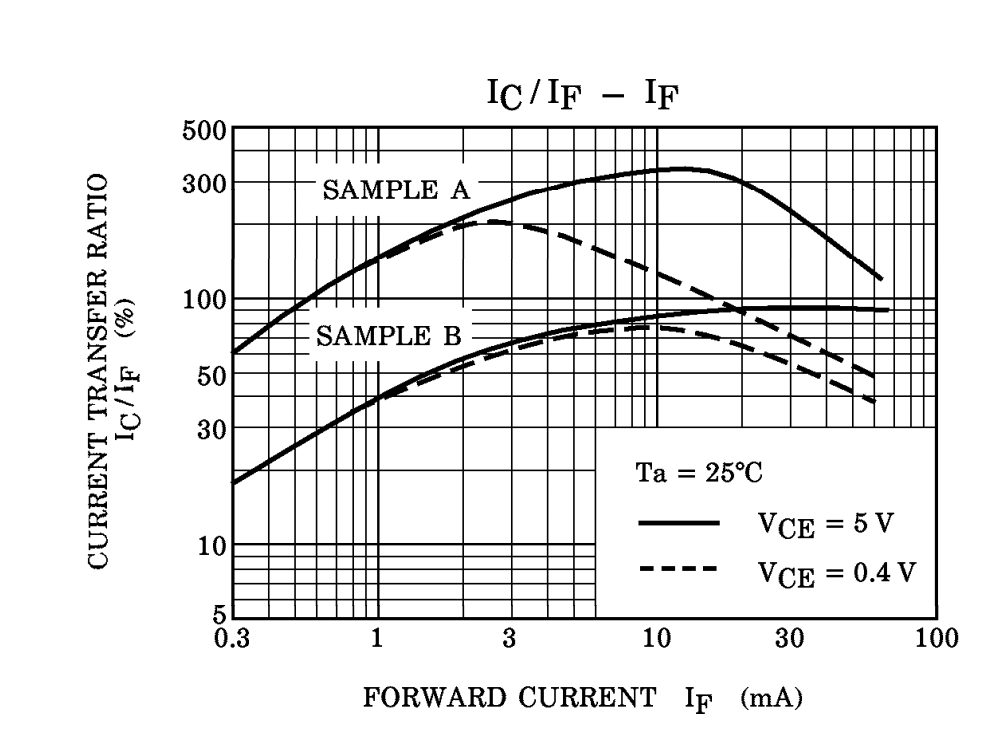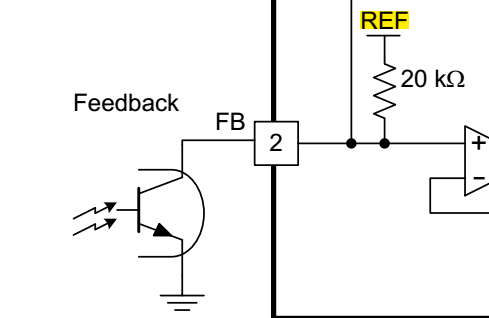Other Parts Discussed in Thread: TL431
Hello!
It's a new question of UCC28600 QR detection failure. I feel strange about the FB-pin current, the optocoupler primary current IF was about 25 mA at no load.
Check the CTR-IF curve of TLP521, it seems like the secondary current IC was more than 250uA(VREF/20K).
And at 1A load, IF was about 8 mA, IC was still larger than 250uA...The whole process of increasing load to 2A, the circuit had stable 24V output.
But when I reduced IF by presuming IC=250uA, the circuit was unstable at no load, TL431 didn't work, the output voltage was about 35V(24V is the goal).
Is there any supplementary current adding to FB-pin? I check some Ti recommended design of UCC28600, IF is lese than my design but I am not aware of the specific design rule about IF.



